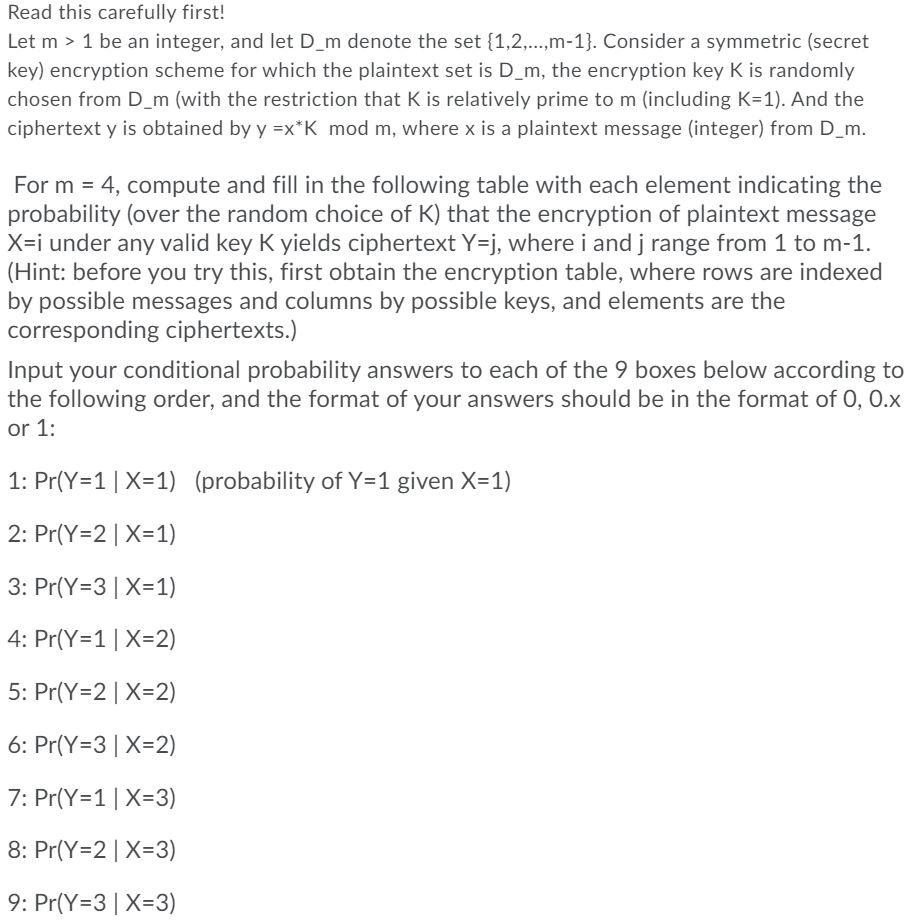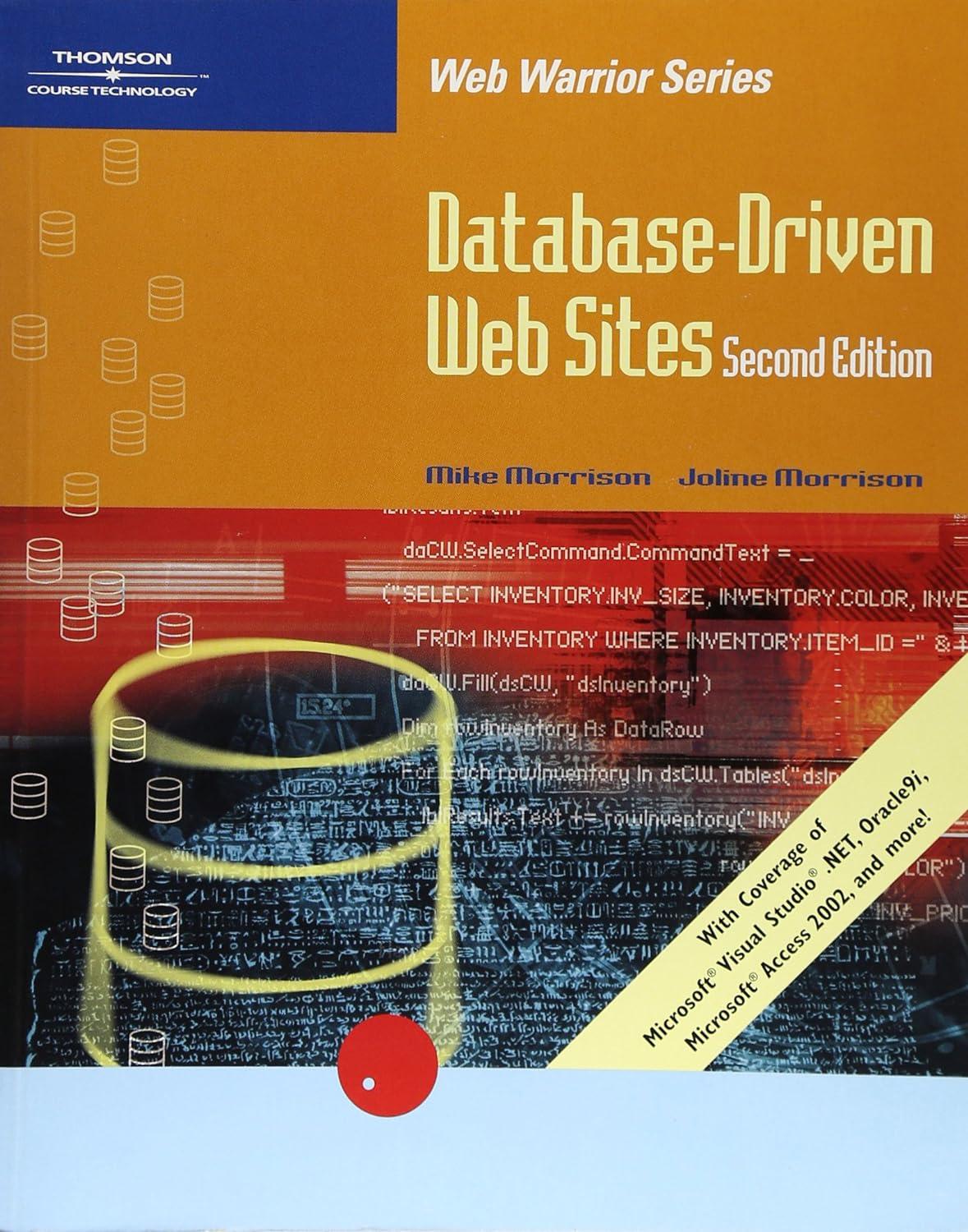
Read this carefully first! Let m > 1 be an integer, and let D_m denote the set {1,2,...,m-1}. Consider a symmetric (secret key) encryption scheme for which the plaintext set is D_m, the encryption key K is randomly chosen from D_m (with the restriction that K is relatively prime to m (including K=1). And the ciphertext y is obtained by y =x*K mod m, where x is a plaintext message (integer) from D_m. For m = 4, compute and fill in the following table with each element indicating the probability (over the random choice of K) that the encryption of plaintext message X=i under any valid key K yields ciphertext Y=j, where i and j range from 1 to m-1. (Hint: before you try this, first obtain the encryption table, where rows are indexed by possible messages and columns by possible keys, and elements are the corresponding ciphertexts.) Input your conditional probability answers to each of the 9 boxes below according to the following order, and the format of your answers should be in the format of 0, 0.x or 1: 1: Pr(Y=1|X=1) (probability of Y=1 given X=1) 2: Pr(Y=2|X=1) 3: Pr(Y=3 | X=1) 4: Pr(Y=1 | X=2) 5: Pr(Y=2 | X=2) 6: Pr(Y=3 | X=2) 7: Pr(Y=1 | X=3) 8: Pr(Y=2 | X=3) 9: Pr(Y=3 | X=3) Read this carefully first! Let m > 1 be an integer, and let D_m denote the set {1,2,...,m-1}. Consider a symmetric (secret key) encryption scheme for which the plaintext set is D_m, the encryption key K is randomly chosen from D_m (with the restriction that K is relatively prime to m (including K=1). And the ciphertext y is obtained by y =x*K mod m, where x is a plaintext message (integer) from D_m. For m = 4, compute and fill in the following table with each element indicating the probability (over the random choice of K) that the encryption of plaintext message X=i under any valid key K yields ciphertext Y=j, where i and j range from 1 to m-1. (Hint: before you try this, first obtain the encryption table, where rows are indexed by possible messages and columns by possible keys, and elements are the corresponding ciphertexts.) Input your conditional probability answers to each of the 9 boxes below according to the following order, and the format of your answers should be in the format of 0, 0.x or 1: 1: Pr(Y=1|X=1) (probability of Y=1 given X=1) 2: Pr(Y=2|X=1) 3: Pr(Y=3 | X=1) 4: Pr(Y=1 | X=2) 5: Pr(Y=2 | X=2) 6: Pr(Y=3 | X=2) 7: Pr(Y=1 | X=3) 8: Pr(Y=2 | X=3) 9: Pr(Y=3 | X=3)







